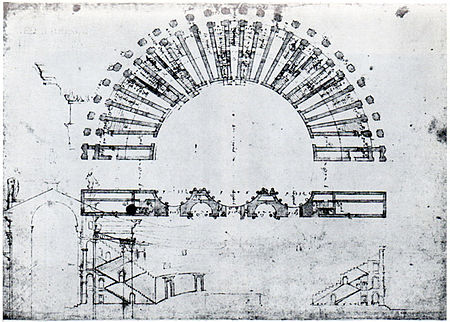Teatro Berga

The Teatro Berga was a Roman theatre in Vicetia, modern Vicenza, Italy. It stood in an area beyond the Retrone river, in what is now part of the historic centre of the city. Its site corresponded to buildings currently standing between Contrà Santi Apostoli, Piazzetta San Giuseppe, Contrà Porton del Luzzo, Piazzetta Gualdi, Contrà del Pozzetto and contrà Lioy. Contrà Porton del Luzzo follows the semi-circular route of the external perimeter of the south-facing cavea of the former theatre. The theatre was built in the 1st century BC and it remained in use until at least the 3rd century AD. It remained intact throughout the medieval period, being used as a prison in the 13th century before falling into ruin. Its remains were documented by Andrea Palladio in the 16th century, and the building was mostly destroyed in the 17th century when it was built up as residential buildings. A few scant remains incorporated into these houses, and the general outline of the theatre are all that remain today.
Excerpt from the Wikipedia article Teatro Berga (License: CC BY-SA 3.0, Authors, Images).Teatro Berga
Piazzola San Giuseppe, Vicenza Santa Caterina
Geographical coordinates (GPS) Address Nearby Places Show on map
Geographical coordinates (GPS)
| Latitude | Longitude |
|---|---|
| N 45.543888888889 ° | E 11.547944444444 ° |
Address
Piazzola San Giuseppe 10
36100 Vicenza, Santa Caterina
Veneto, Italy
Open on Google Maps










